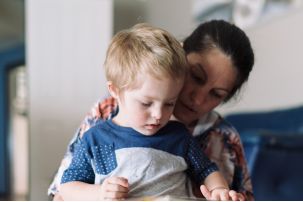The lessons encourage students to analyze and interpret data to discover the realities of poverty in Australia and its effects on individuals and society. Through the HPE, Mathematics, and Literacy lessons, students engage with real-life stories and explore initiatives that aim to reduce the effects of poverty and create better opportunities for all people living in Australia. The unit aims to empower students to take action and develop an action plan to reduce poverty in their communities in line with the UN's Global Goals.

Understanding Poverty and Inequality in Australia
- Secondary
- Year 7 - 10
- Mathematics
- Health and Physical Education
- Health
- Physical Education
- Environmental
- Sustainability
- Social
- Mental Health
- Physical Health
- ...
Find out
- Lesson
- ...
Poverty And Inequality In Australia - Poverty And The Social Determinants Of Health
- Secondary
- Year 7 - 8
- Health and Physical Education
- Health
- Social
- Equality
- Homelessness
- Human Rights
- Social Action
- Lesson
- ...
Poverty And Inequality In Australia - People Behind The Statistics
- Secondary
- Year 9 - 10
- Health and Physical Education
- Health
- Social
- Equality
- Homelessness
- Human Rights
- Social Action
- Lesson
- ...
Poverty And Inequality In Australia - Understanding Poverty And Inequality In Australia
- Secondary
- Year 7 - 8
- Health and Physical Education
- Health
- Social
- Equality
- Homelessness
- Human Rights
- Social Action
- Lesson
- ...
Poverty And Inequality In Australia - What Are The Facts?
- Secondary
- Year 9 - 10
- Health and Physical Education
- Health
- Physical Education
- Social
- Equality
- Homelessness
- Human Rights
- Social Action
- Lesson
- ...
Poverty And Inequality In Australia - What Are The Chances?
- Secondary
- Year 7 - 8
- Mathematics
- Social
- Equality
- Homelessness
- Human Rights
- Social Action
Save
Share this lesson
Copy Link
Copied
Share
Welcome back!
Don't have an account yet?
Log in with:
By signing up to Cool.org you consent and agree to Cool's privacy policy to
store, manage and process your personal information. To read more, please see
our privacy policy here(Opens in new tab).
Create your free Cool.org account.
Many of our resources are free, with an option to upgrade to Cool+ for premium content.
Already have an account?
Sign up with:
By signing up to Cool.org you consent and agree to Cool's privacy policy to
store, manage and process your personal information. To read more, please see
our privacy policy here(Opens in new tab).